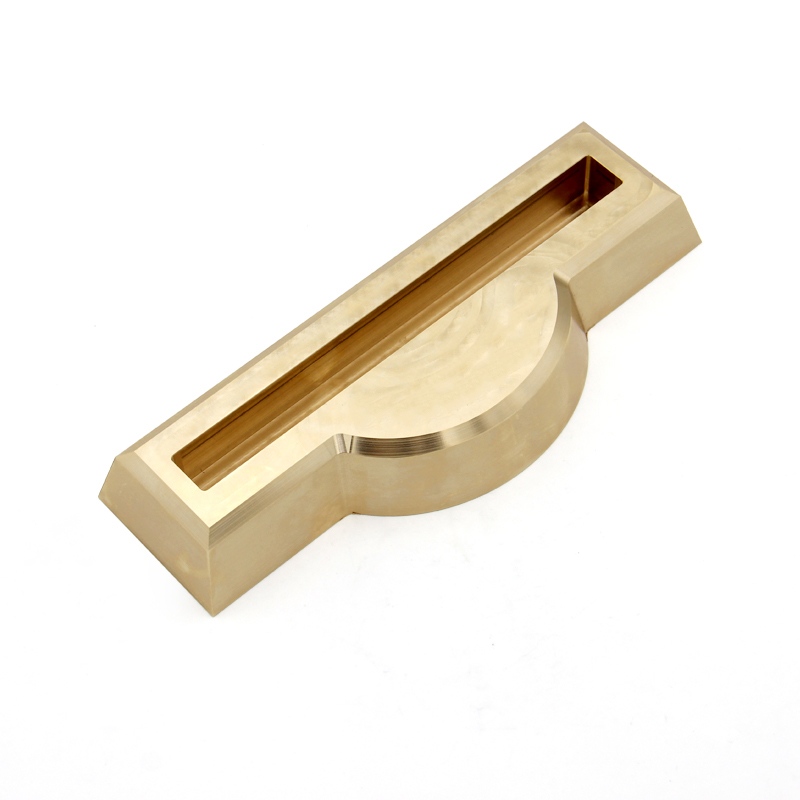What is CNC Brass Machining?
CNC brass machining refers to the computer-controlled manufacturing process that shapes brass alloys into precise components using subtractive methods. This advanced manufacturing technique combines the excellent machinability of brass (rated 85% free-cutting on the CDA scale) with the precision of CNC systems capable of maintaining tolerances as tight as ±0.005mm. The process typically utilizes cutting speeds ranging from 100-300 m/min for leaded brass alloys, with feed rates optimized between 0.05-0.2mm/tooth depending on tool geometry.
Key brass alloys used in CNC machining include C36000 (free-cutting brass), C26000 (cartridge brass), and C46400 (naval brass), each selected based on required mechanical properties ranging from 45-75 ksi tensile strength and 8-45% elongation.

Characteristics of CNC Machined Brass
Superior Machinability: Brass alloys exhibit excellent chip formation with a machinability rating of 100% for C36000 (compared to 100% for free-cutting steel 12L14 as baseline), allowing for high-speed machining at 2-3 times the rate of many steels.
Precision Capabilities: CNC systems achieve dimensional accuracies within IT5-IT7 grades (ISO 286) with surface finishes reaching Ra 0.4-1.6μm without secondary operations.
Thermal Properties: With a thermal conductivity of 120 W/m·K (C26000), brass efficiently dissipates heat during machining, permitting higher Material removal rates up to 50 cm³/min in roughing operations.
Corrosion Resistance: Dezincification-resistant alloys like C68700 maintain corrosion rates below 0.025 mm/year in most industrial environments.
Electrical Performance: Electrical conductivity ranges from 28-45% IACS depending on alloy composition, making brass ideal for electrical components.
Applications of CNC Machined Brass Components
The unique combination of properties makes CNC machined brass essential across multiple Industries:
Plumbing Systems: Precision valve bodies and fittings with pressure ratings up to 600 psi (C37700) and leak-proof threading meeting ASME B1.20.1 standards.
Electrical Engineering: High-conductivity terminals and connectors with contact resistance below 0.5 mΩ, often plated with 3-5μm nickel or tin layers.
Marine Hardware: Corrosion-resistant naval brass (C46400) components with >20 year service life in saltwater environments.
Musical Instruments: Precision brasswind instrument components manufactured to acoustic tolerances within ±0.1mm for optimal sound quality.
Automotive Fuel Systems: Carburetor jets and fuel injection components with orifice diameters controlled to ±0.01mm for precise fuel metering.
Medical Devices: Antimicrobial brass (C69300) components with >99.9% microbial reduction, used in hygienic equipment handles.
Maintenance and Care for CNC Brass Machining Equipment
Proper maintenance ensures consistent machining quality and extends equipment lifespan:
Tooling Maintenance: Carbide tools should be inspected every 4-6 hours of runtime for brass machining, with edge resharpening performed after 120-180 minutes of actual cutting time.
Coolant Management: Maintain coolant concentration between 5-8% for optimal performance, with pH levels monitored daily (ideal range 8.3-9.2). Replace coolant completely every 3-6 months depending on usage.
Machine Alignment: Verify spindle perpendicularity within 0.002mm/100mm monthly using precision squares and dial indicators.
Chip Management: Implement automated chip removal systems to prevent brass chip accumulation exceeding 2kg/m² in the work area, which can affect machining accuracy.
Way Lubrication: Apply way oil with viscosity ISO VG 68 at intervals not exceeding 8 hours of continuous operation.
Spindle Care: Monitor spindle vibration levels, maintaining below 0.5 mm/s RMS for brass machining applications. Rebuild spindles after approximately 15,000-20,000 operating hours.
For optimal brass chip control, use cutting tools with rake angles between 8-12° and helix angles of 35-45°. This geometry promotes clean chip formation while minimizing built-up edge.
Process Optimization for Brass Machining
Advanced techniques enhance CNC brass machining efficiency:
High-Speed Machining: Utilize spindle speeds up to 15,000 RPM for small-diameter tools (<5mm), maintaining="" chip="" loads="" of="">0.05-0.12mm/tooth.
Trochoidal Milling: Implement toolpath strategies with stepovers limited to 15-25% of cutter diameter for improved tool life in slotting operations.
Micro-Machining: For precision features<1mm, reduce="" feedrates="" to="">50-100mm/min and use tools with edge radii <10μm<>.
Workholding: Maintain clamping pressures below 50 psi for thin-walled brass components to prevent deformation.





 English
English

